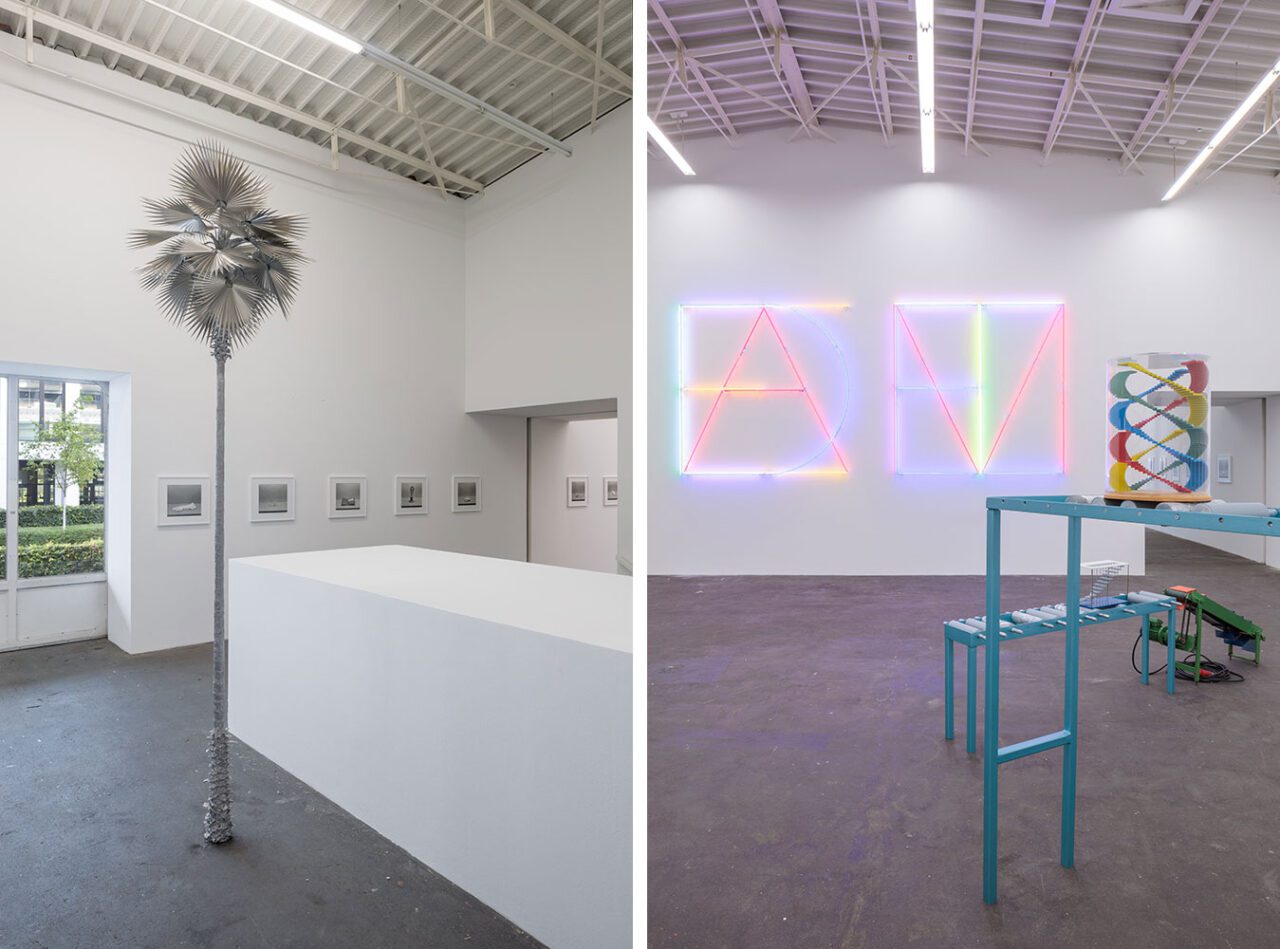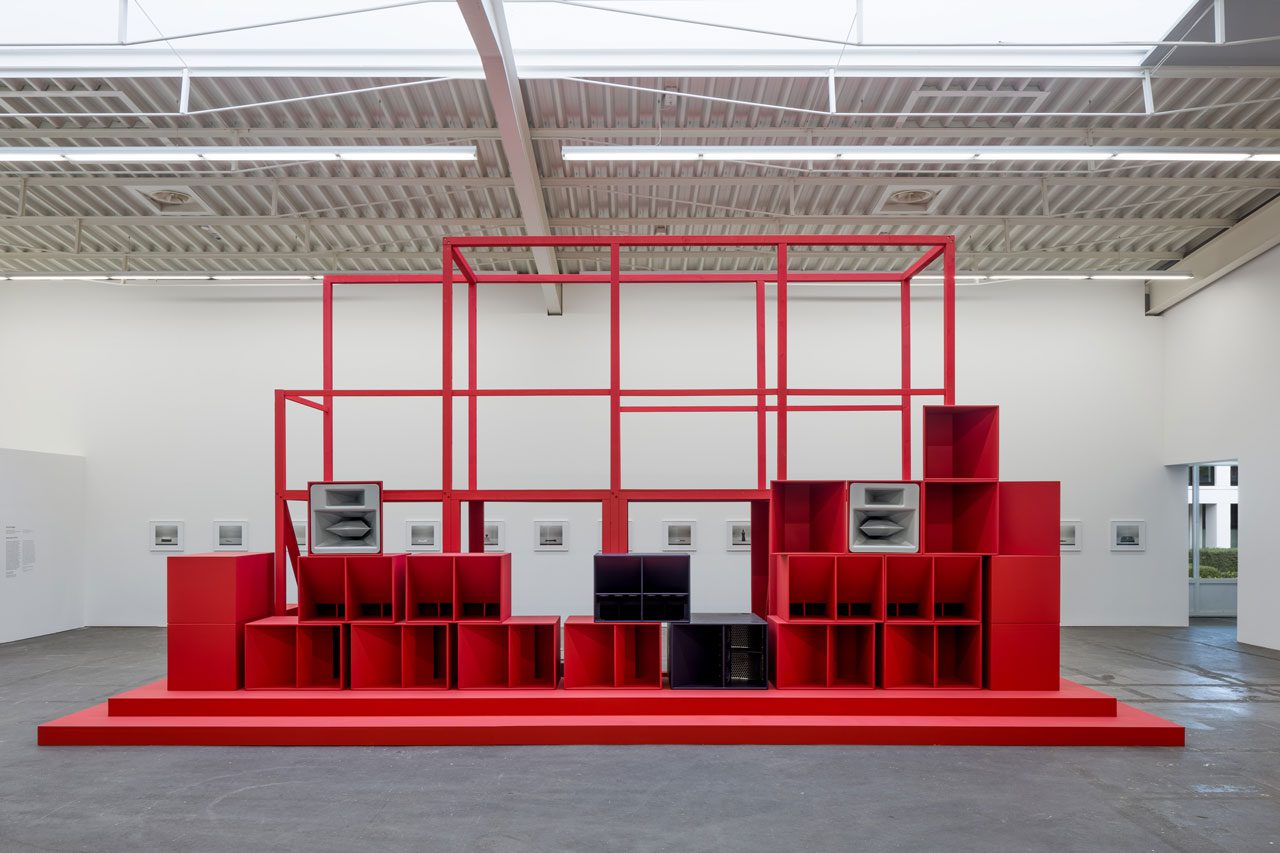PRESENTATION: Museum in Motion
The exhibition “Museum in Motion” presents a selection of large-scale installations, sculptures, and photographic series from the collection of Hamburger Bahnhof – Nationalgalerie der Gegenwart. Each raises questions about the evolving role of the museum of contemporary art. The exhibition’s title highlights that museums are not static, but spaces in motion that continually adapt to meet the challenges posed by the art of the present and future.
By Dimitris Lempesis
Photo: Hamburger Bahnhof Archive
As society changes, so does art, reflecting the inseparable connection between artists, museums, and the world around them. A museum of con- temporary art is part of society, driving the creation of culture and urging a constant adaptation to changing times. Amid new conditions of the present, including rapidly evolving technology, shifting societal demographics, and the inherent limitation of the museum itself. Hamburger Bahnhof looks to the future, seeking to meet the challenges ahead. Among the works are: Elmgreen & Dragset “Protruding Gallery / Powerless Structures, Fig. 223” (2024): Elmgreen & Dragset is a Scandinavian artist duo that has lived in Berlin since 1997 and creates work with wit and subversive humour addressing social and cultural concerns. The sculpture presented in this room shows an art gallery which is in the process of either rising from or sinking into the ground. On its side, the designation ‘CONTEMPORARY ART’ is partially covered to read ‘TEMPORARY ART.’ This play on words seems to cast doubt on the longevity of contemporary artistic creations. In this work, the museum itself also becomes the subject of inquiry. The sculpture opens up questions about the museum’s future: in which direction is it moving? Will the institution last forever? Or is it only ‘temporary’? Elmgreen & Dragset “Deutsche Museen” (2005): Dispersed throughout the exhibition space is Elmgreen & Dragset’s second work for Museum in Motion. It consists of eight works which use im- ages of empty exhibition spaces in German museums as the basis for multi-colored photogravures. For this series, the artist duo asked muse- ums to provide them with these images. When museums invite artists to have an exhibition, they often provide them with pictures showing their spaces without any other displays. This is based on the assumption that an empty exhibition space can be neutral. By showing us these spaces, they shift our focus to the architectural features and distinct character of these empty rooms, highlighting that museums are never neutral spaces. Ricarda Roggan “Auswahl von Fotografien from the series “Apokryphen“ ( 2013-2019): Photographer Ricarda Roggan’s work focuses on objects rather than people. The title of this series, “Apocrypha”, refers to ancient religious texts that were excluded from the official Christian or Jewish holy books. In this series, she captures everyday items belonging to various German figures from the 18th to early 20th centuries. Set against neutral backgrounds, these objects, like quills or tuning forks, hint at the former owners’ professions but are not the artefacts that brought them fame. Looking at these historical objects introduces ideas about how the ascribed value of an object changes over time. Roggan’s photographs illustrate questions muse- ums face about which objects are deemed worthy of collecting and pre- serving and who has the authority to make these decisions. Cevdet Erek “Bergama Stereo – Berlin Fragment” (2019-2024): Cevdek Erek creates site-specific works that connect architecture with sound. This sculpture is based on a large installation from 2019 which was installed in Hamburger Bahnhof’s Historic Hall. It references the Pergamon Altar, which was transported from what is now Western Turkey to Berlin at the end of the 19th century, and is housed at the Museum Is- land’s Pergamon Museum. Erek incorporated loudspeakers into the sculpture that play techno music, growling voices, and bass drum rhythms originating from the Balkans, Turkey, and Middle East. Through embedding different forms of music into the sculpture, the artist addresses how a work of art accumulates different meanings based on the cultural contexts in which it is displayed. In the broader museum context, this raises the question of who speaks for whom, and how an artwork itself can contribute to these dialogues. Manaf Halbouni “Go Home” (2019): Manaf Halbouni’s work addresses themes of migration, identity, and be- longing. “Go Home” is a photographic print on textile in a lightbox. It shows graffiti on a wall in Dresden which reads ‘go home’ in Arabic. Later on, someone transformed the statement into a message of welcome by add- ing the Arabic word for ‘don’t,’ changing the statement to read ‘don’t go home.’ Halbouni, an artist with both Syrian and German heritage, moved to Dresden in 2008 to study art but was unable to return to his childhood home of Damascus due to the outbreak of the civil war in 2011. The work invites reflection on how the museum can serve as an open house for an increasingly diverse society while also considering which artists find a home within its collection. David Zink Yi “Neusilber: (2009): David Zink Yi frequently explores the hybridization of cultures and environments through video works, photographs, and sculptures. “New Silver” is a scaled-down model of a ‘Washington Robusta’ palm tree, which grows in Northern Mexico and is planted along streets and promenades in the southwest of the United States. The leaves are cut from thin stainless steel and folded by hand. The Peruvian-born, Berlin-based artist originally wanted to realize the sculpture in the light metal alloy for which it is named, but this was not technically possible. The title suggests the gap between the artist’s initial idea and the final work. In giving the work a title that reflects his inability to produce it in a specific material, the artist high- lights the fact that the complexities of the world cannot be fully contained within the labels and hierarchies of the museum.
Maurizio Nannucci “Idea” & “Time” (both 1997): Maurizio Nannucci has been using white and colored neon tubes as mate- rial for light installations since the 1960s. He often uses this material to form letters or words. In the two works on display, the four differently colored letters of the words “Idea” and “Time” are stacked on top of each other and only reveal themselves upon careful observation. Nannucci’s words ‘idea’ and ‘time’ draw attention to broader questions of how art- works are conceptualized and created. His work also presents a challenge for the future: the production of neon lights is ending due to environmental concerns, necessitating that museums find new technologies so that these kinds of works remain accessible for future generations. Jasmin Werner “Frightened Gods Of Fortune, Cylindrical Stamps II” & “Ambivalent Escalator (Beim Laufen die Schuhe besohlen)” (both 2018): Jasmin Werner uses preexisting symbols and objects to create new meanings. Her installation consists of two distinct sculptures, each of which are made of two components: a conveyor belt and a raised plat- form. The conveyor belts, a symbol of industrial progress, are transformed by the artist into staircases, a symbol of elevation, which she titles Ambivalent Escalators. The raised platforms are embedded with rolling pins that the artist converted into stamps referencing ancient seals that depict the achievements of their owners. The platforms are titled “The Frightened Gods of Fortune”, repeating the title of a work by the American artist Robert Rauschenberg. By bringing symbols of industrial and architectural reproduction together with art historical references, Werner highlights the cyclical nature of creation and art history at large, a discipline that underpins the institution of the museum. Anne Imhof “Room IV” (2021): Anne Imhof frequently focuses on endurance in performances that can last for hours without interruption. Room IV originally provided the setting for such a performance in a 2021 exhibition entitled Natures mortes, where performers used it as a stage for music and movement-based actions. Natures mortes means ‘dead natures’ and is used in art history to describe the genre of the ‘still life,’ paintings which depict inanimate ob- jects such as tableware, food, and bouquets. Room IV depicts the after- math of a performance piece, and can itself be regarded as a kind of still life. Displayed at Hamburger Bahnhof, it stands on its own as a piece of sculpture, like an empty stage. The duality between performance and sculpture challenges the museum to present the piece in ways where its past and present can both be acknowledged. Jeremy Shaw “Phase Shifting Index” (2020): Jeremy Shaw creates films that explore the body as vehicle for transformative experiences. “Phase Shifting Index” is a seven-screen looped video installation showing fictional subcultures engaged in ritualistic dance-like movements, which eventually sync into a collective ecstatic experience. By using a variety of older media formats, such as 16mm film, Hi8 video tape, and VHS technology, Shaw presents us with what at first glance ap- pears to be found historical footage. The work blurs the line between documentary and fiction, as well as our awareness of time and place. As in Shaw’s installation, where individuals are presented in an altered state, museums can be spaces that alter the awareness of their visitors.
Artists: Cevdet Erek, Elmgreen & Dragset, Manaf Hal- bouni, Anne Imhof, Maurizio Nannucci, Ricarda Roggan, Jeremy Shaw, Jasmin Werner, and David Zink Yi
Photo: Cevdet Erek, Bergama Stereo – Berlin Fragment, 2019-2024, © Nationalgalerie – Staatliche Museen zu Berlin / Jacopo La Forgia © Staatliche Museen zu Berlin, Nationalgalerie 2024 acquired by the Stiftung der Freunde der Nationalgalerie für zeitgenössische Kunst
Info: Curators: Sam Bardaouil and Gabriele Knapstein, Hamburger Bahnhof – Nationalgalerie der Gegenwart Invalidenstraße 50/51, Berlin, Germany, Duration: 6/9/2024 until further notice, Days & Hours: Tue-Wed & Fri 10:00-18:00, Thu 10:00-20:00, Sat-Sun 11:00-18:00, www.smb.museum/







Right: Jasmin Werner, Ambivalent Escalator (Sanssouci), 2018 & The Frightened Gods Of Fortune, Cylindrical Stamps I, 2018 & The Frightened Gods Of Fortune, Cylindrical Stamps II, 2018 & Ambivalent Escalator (Beim Laufen die Schuhe besohlen), 2018 and Maurizio Nannucci, Idea, 1997 & Time, 1997, © Nationalgalerie – Staatliche Museen zu Berlin / Jacopo La Forgia © Loan of the Bundesrepublik Deutschland – Sammlung Zeitgenössische Kunst / Loan courtesy of the artist © Permanent loan of the Com-merzbank AG, Frankfurt am Main


